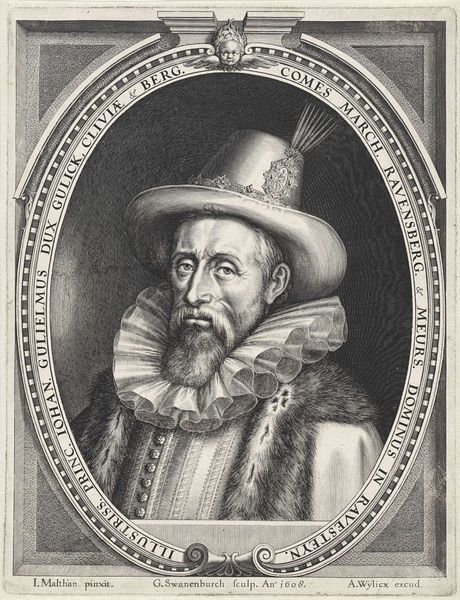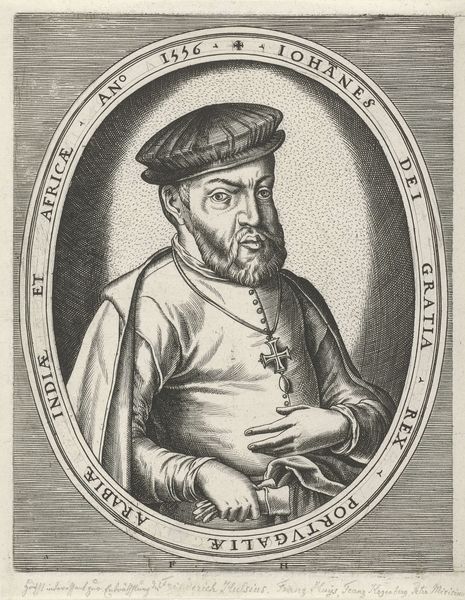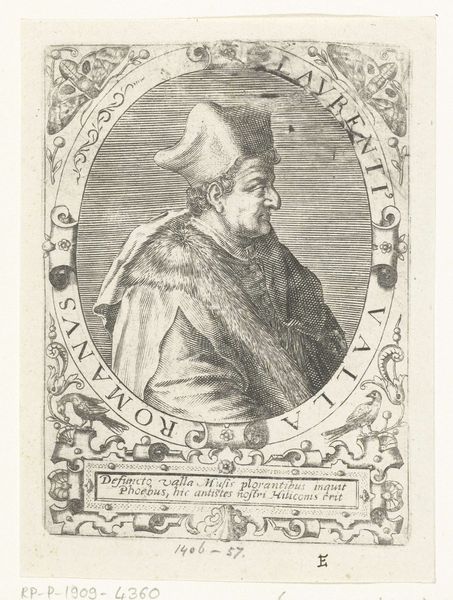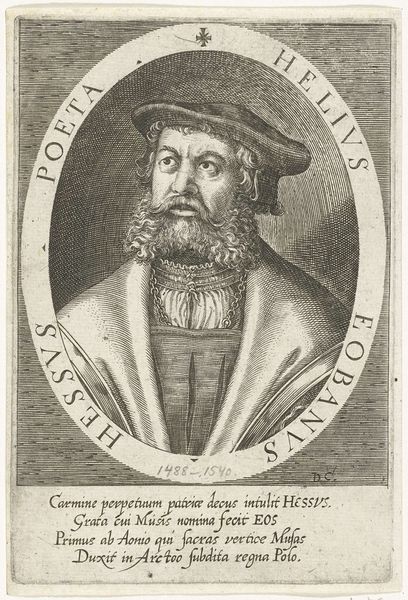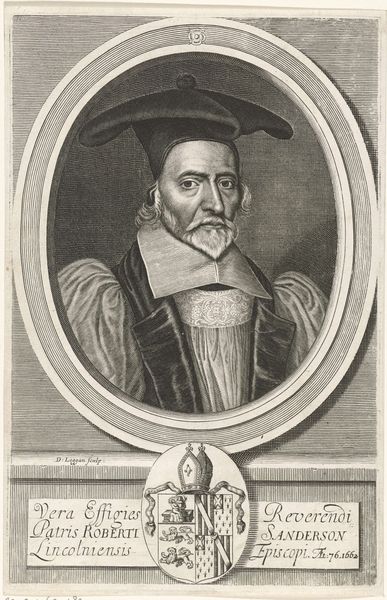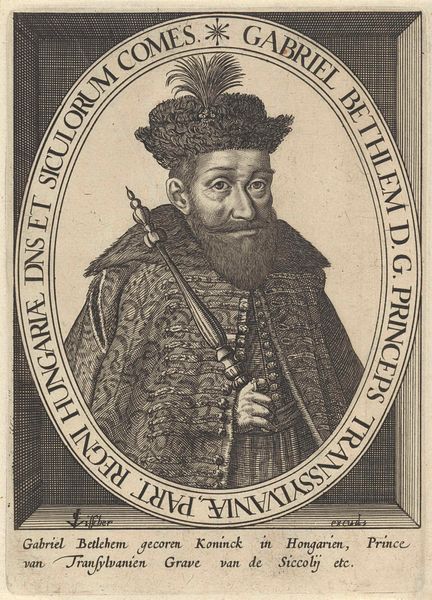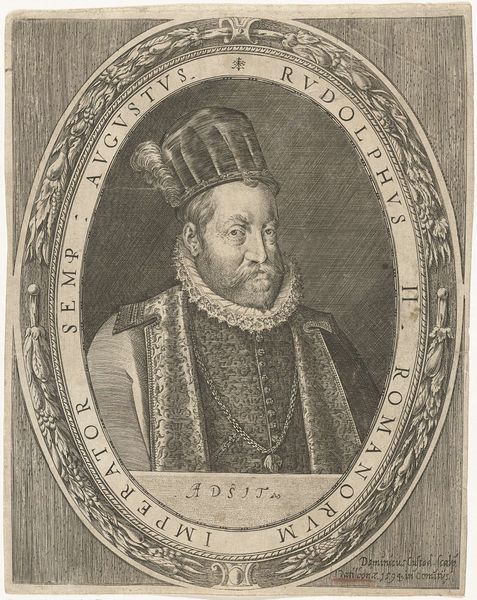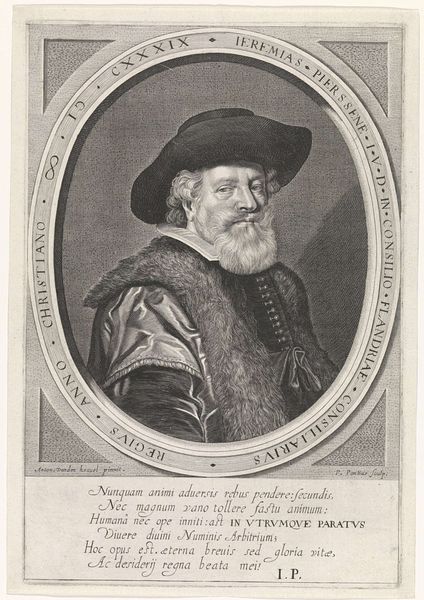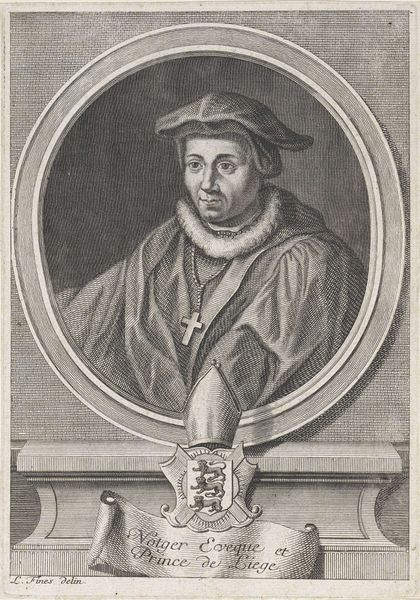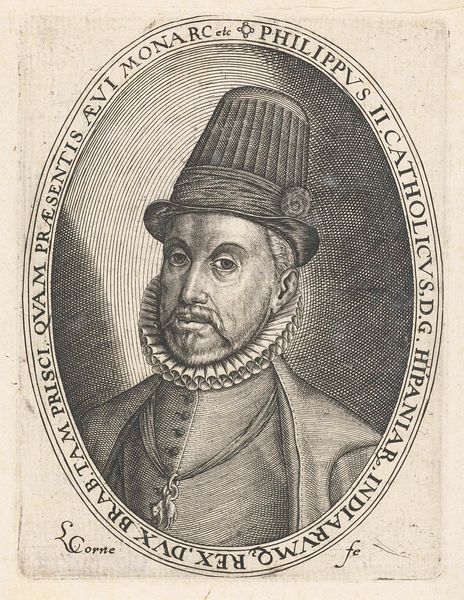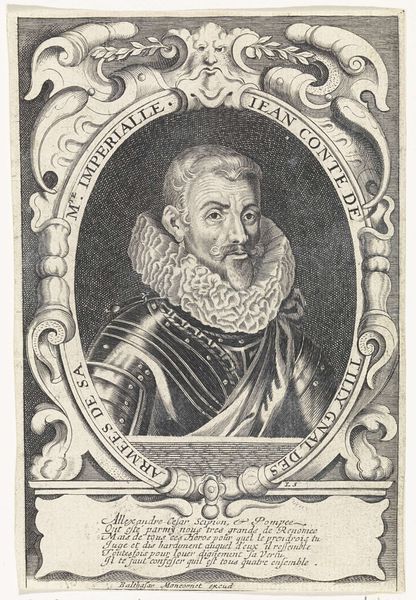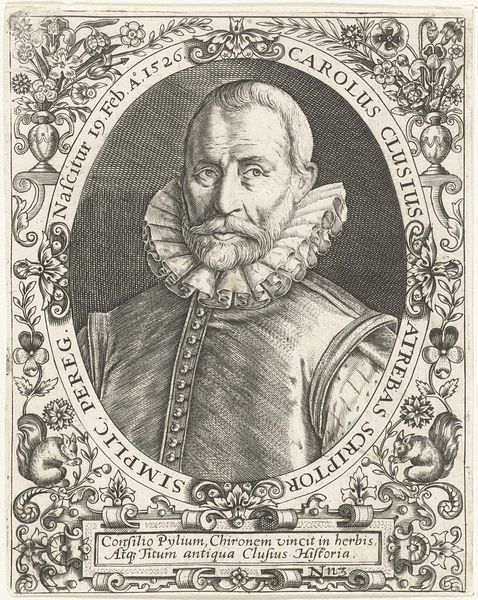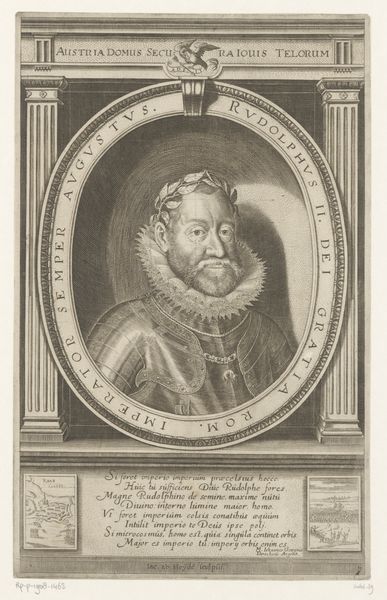
Portret van Willem V, hertog van Gulik, Kleef en Berg en graaf van Mark en Ravensberg 1610
0:00
0:00
willemvanswanenburg
Rijksmuseum
metal, engraving
#
portrait
#
baroque
#
metal
#
old engraving style
#
history-painting
#
engraving
Dimensions: height 268 mm, width 202 mm
Copyright: Rijks Museum: Open Domain
This is Willem van Swanenburg’s “Portret van Willem V, hertog van Gulik, Kleef en Berg en graaf van Mark en Ravensberg,” created around 1630. Immediately, the viewer is drawn to the subject’s composed gaze and opulent fur garments, set against the backdrop of an intricately inscribed oval frame. The structure of this portrait, like many from this era, uses the frame as more than decoration; it serves as a semiotic device. The inscriptions, detailing the subject's titles and affiliations, root the image in a precise historical and social context. The symmetry within the frame—from the cherubic figure at the top to the Latin inscription at the base—suggests a world governed by order. However, the very act of framing also creates a visual tension. It’s a boundary that both defines and confines. What lies beyond this carefully constructed image? What meanings might be destabilized if we consider this portrait not as a definitive likeness, but as a carefully coded representation of power and identity? The artist uses line and form to create not just an image of a man, but a statement about the nature of representation itself.
Comments
No comments
Be the first to comment and join the conversation on the ultimate creative platform.
